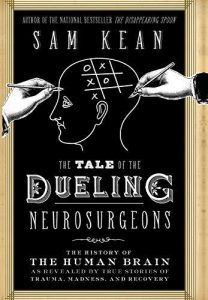What’s This About Dueling Neurosurgeons?

Chance, luck, or misfortune has played an essential role in scientific advancements. Approximately 30 to 50% of all scientific discoveries are in some way the result of accidents or what opportunistic scientists call serendipity. This phenomenon is especially true for the mental health fields. For example, any denizen who partook in the psychedelic scene of the 1960s counterculture owes some level of gratitude to an accidental discovery. In the 1930s, Albert Hoffman, a Swiss chemist interested in the chemistry of plants and animals, was experimenting with a chemical found in ergot, a fungus that some historians believe was associated with the hysteria present during the Salem witch trials of 1692. The primary purpose of his experiment was to develop a treatment for women experiencing respiratory depression and other symptoms due to complications during pregnancy. In his experiment, Hoffman combined the nucleus common in all ergot alkaloids (lysergic acid) with a derivative (dimethylamine) and created what we now know as LSD. Hoffman was not aware of the powerful hallucinogen effects of LSD until he accidentally absorbed the drug through his skin. He continued to use the drug throughout his life and never gave up the hope of finding a medical purpose for the drug.
This tale is one of the many stories of accidental scientific discoveries highlighted in Sam Kean’s book, The Tale of the Dueling Neurosurgeons. Kean is a writer and contributor to Psychology Today, The New York Times Magazine, Slate, and The New Scientist. He has also published five books, which focus on various scientific discoveries. In this book, Kean takes the reader on a historical journey of accidents and misfortunes that have led to critical neurological advancements. One of the fundamental questions about the brain that underlines this book is whether specific regions affect certain thoughts and perceptions. We know the answer to this question now; however, it is quite interesting to read about how these discoveries happened.
Each chapter was fascinating and easy to comprehend. Kean avoids technical details about brain functioning but instead relies on good storytelling. Anyone who is interested in neuroscience or is just curious about science and history will find The Tale of the Dueling Neurosurgeons a must-read. I know I did. Just don’t plan on taking LSD before embarking on this journey through history.